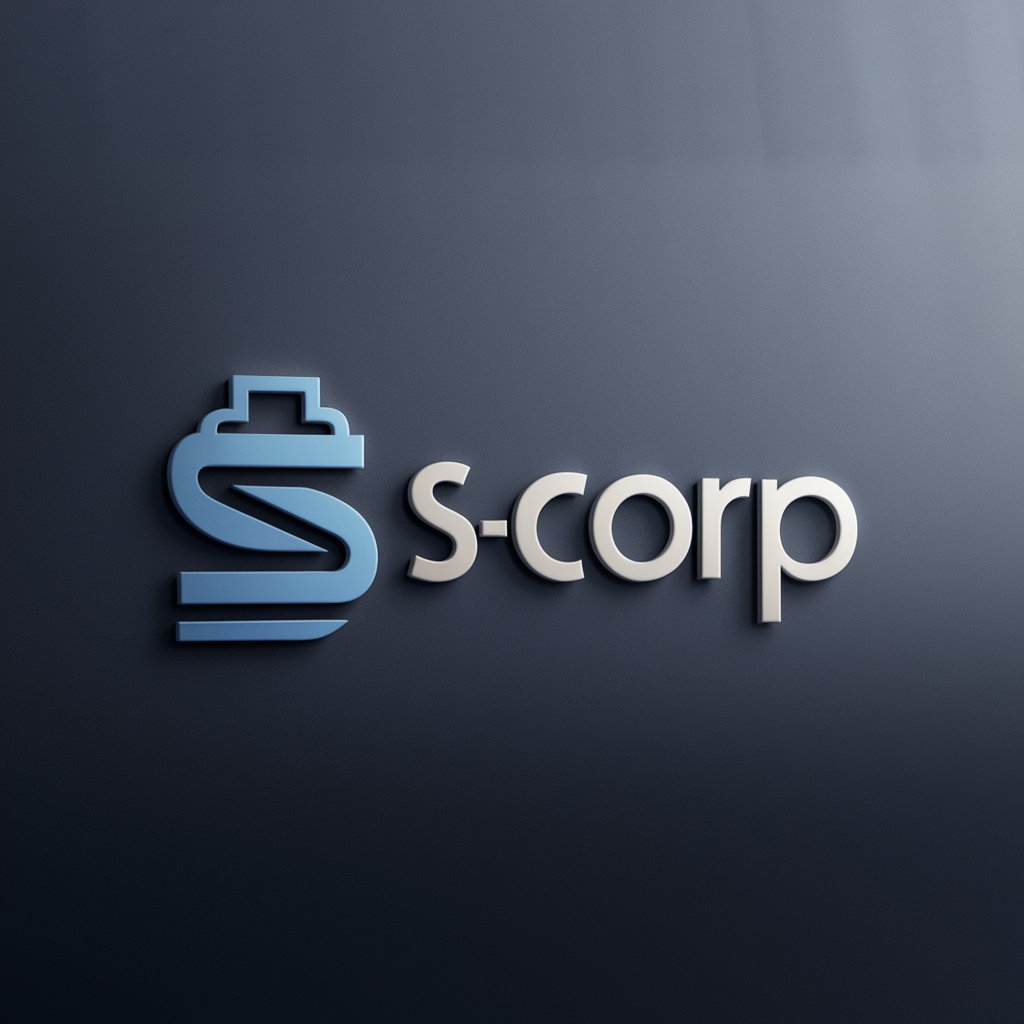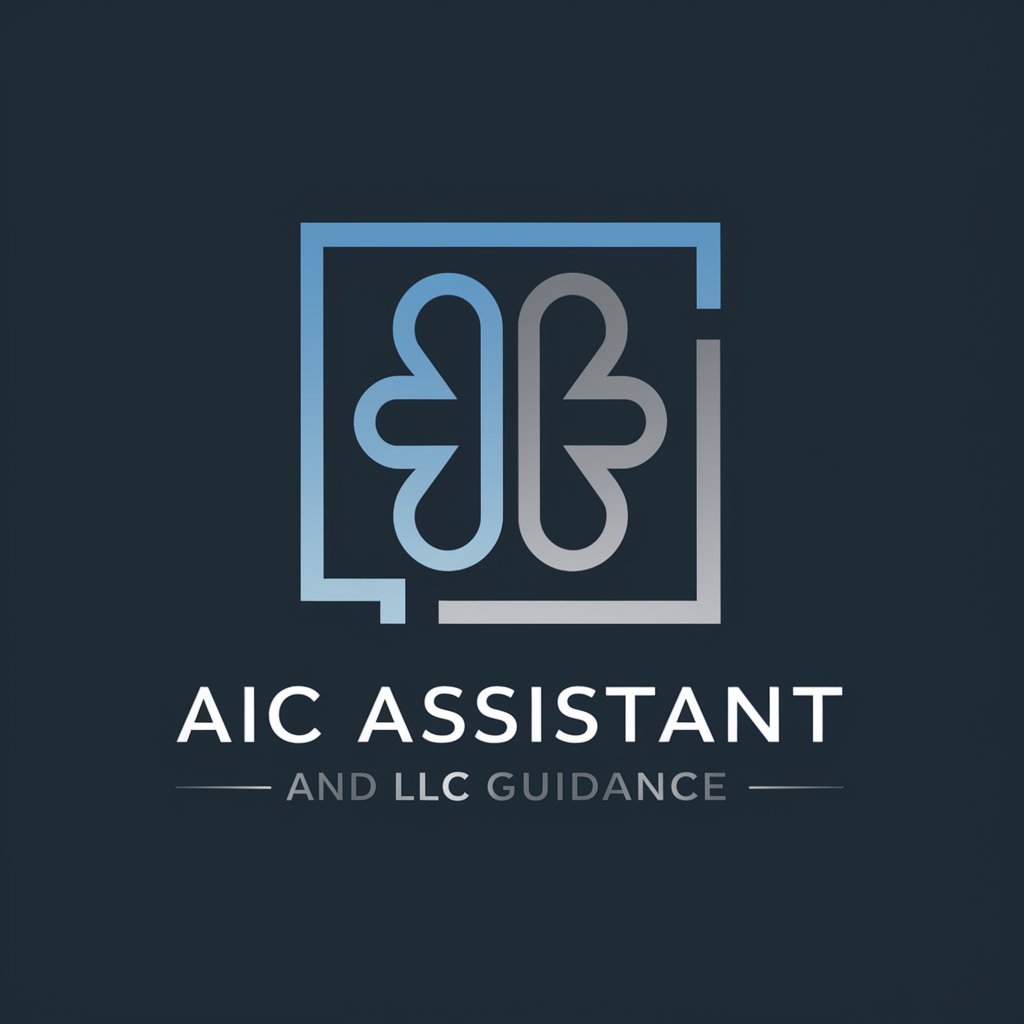S-Corp - S-Corp Management Tool

Welcome! How can I assist you with information about S-corporations today?
Streamline S-Corp Operations with AI
What are the key tax advantages of an S-corporation?
Can you explain the eligibility requirements for forming an S-corporation?
How does the income allocation work in an S-corporation?
What are the differences between an S-corporation and a C-corporation?
Get Embed Code
Understanding S-Corporations
An S-corporation, often abbreviated as S-Corp, is a special type of corporation designed to avoid the double taxation typical of traditional C-corporations. This business structure allows profits, and some losses, to be passed directly to the owners' personal income without being subject to corporate tax rates. Not all states tax S-Corps equally, and some do not recognize them at all, applying instead the same taxation as C-Corps. The core purpose of an S-Corp is to combine the limited liability advantages of a corporation with the tax efficiencies of a partnership. For instance, if an S-Corp earns $100,000 in profits, this income is distributed to its shareholders who then report the income on their personal tax returns at their individual tax rates. This structure avoids the corporation itself being taxed on its profits before distribution (a hallmark of C-Corp taxation). An example scenario illustrating the S-Corp's design purpose could involve a small business consulting firm that generates moderate annual revenue. By electing S-Corp status, the firm's owners can distribute the profits among themselves, thereby reducing the overall tax liability compared to if the firm were taxed as a C-Corp. Powered by ChatGPT-4o。

Key Functions and Applications of S-Corporations
Pass-through Taxation
Example
A graphic design agency structured as an S-Corp generates $200,000 in profit. Instead of the corporation paying taxes on these profits, they are passed through to the shareholders' personal tax returns, possibly resulting in a lower overall tax bill.
Scenario
This function is crucial for businesses that aim to minimize their tax burden while distributing profits directly to owners, who might benefit from lower individual tax rates.
Limited Liability Protection
Example
An S-Corp-owned restaurant faces a lawsuit. The personal assets of the shareholders are protected from any legal judgments against the business, ensuring that only business assets are at risk.
Scenario
This function is vital for businesses in industries prone to litigation, providing owners with peace of mind that their personal assets are safeguarded.
Ability to Raise Capital
Example
An S-Corp manufacturing startup can issue stock to up to 100 shareholders to raise capital for expansion, without subjecting the company to double taxation.
Scenario
This function suits businesses seeking growth through external investment while wanting to maintain a tax-advantageous structure.
Ideal Users of S-Corporation Structures
Small to Medium-Sized Businesses
These businesses benefit from S-Corp status due to the tax savings on pass-through taxation and the protection of personal assets. Ideal for businesses with consistent profits that can be distributed to shareholders, such as consulting firms, retail stores, and small manufacturers.
Startups Seeking Investment
Startups that plan to raise capital through the sale of stock but wish to avoid the double taxation faced by C-Corps. The S-Corp structure allows them to issue stock to up to 100 shareholders, which can include individuals, certain trusts, and estates, making it a versatile option for early-stage companies.
Professionals in Partnership
Professionals such as lawyers, doctors, and accountants who traditionally operate in partnerships but seek the limited liability protections of a corporation. An S-Corp provides these protections along with the tax advantages of pass-through income, making it an attractive option for professional practices.

How to Utilize S-Corp
Start with a Free Trial
Begin by visiting yeschat.ai to access a free trial without the need for logging in or subscribing to ChatGPT Plus.
Determine Eligibility
Ensure your business qualifies for S-Corp status, which typically means being a domestic corporation with no more than 100 shareholders and only one class of stock.
File Form 2553
Elect S-Corp status with the IRS by filing Form 2553. This must be done no later than two months and fifteen days after the beginning of the tax year the election is to take effect.
Maintain Compliance
Follow all regulations to maintain S-Corp status, including meeting all IRS requirements for payroll, annual meetings, and record keeping.
Leverage Tax Benefits
Optimize your tax planning to take full advantage of the S-Corp structure, such as minimizing self-employment taxes and distributing income.
Try other advanced and practical GPTs
深江 方浩
Empowering your creativity with AI

Hair
Your AI-Powered Hair Care Companion

Helmut
Discover German culture with AI-powered humor

Gayle - Live Stream Marketing Strategist
Elevate Your Live Streams with AI-Powered Marketing Insights

시각화 전 데이터 전처리
Transform data into visual stories effortlessly.

LLC Guide
Empowering LLC Management with AI

test gpt
Empowering creativity and productivity with AI

Groww Greens
Cultivate your garden with AI-powered guidance.

Taiwanese Defense Assistant
Empowering Defense Knowledge with AI

Rédacteur Newsletters
Craft Engaging Newsletters with AI

Stock Analysis GPT | 美港股投资交易分析
Empower Your Investment Decisions with AI

Virtual Legal Assitant
Empowering Justice with AI

Frequently Asked Questions about S-Corp
What is an S-Corporation?
An S-Corporation is a special designation granted by the IRS that allows corporations to pass corporate income, losses, deductions, and credits through to their shareholders for federal tax purposes.
How does an S-Corp save on taxes?
S-Corps can save on taxes by allowing income to be passed through to shareholders, who then report the income on their personal tax returns. This avoids the double taxation common to C-Corporations, where both the corporation and shareholders are taxed.
What are the eligibility requirements for S-Corp status?
To qualify, the corporation must be a domestic corporation, have only allowable shareholders (including individuals, certain trusts, and estates), have no more than 100 shareholders, have one class of stock, and not be an ineligible corporation (e.g., certain financial institutions, insurance companies, and domestic international sales corporations).
Can an LLC be treated as an S-Corp?
Yes, an LLC can elect to be treated as an S-Corp for tax purposes by filing Form 2553 with the IRS, provided it meets the eligibility criteria.
What are the disadvantages of an S-Corp?
The disadvantages include stringent eligibility requirements, closer IRS scrutiny, and the obligation to file certain forms and meet specific operational protocols, which can be complex and burdensome for some businesses.
